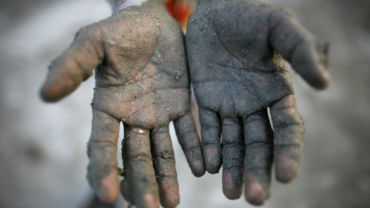The CROWN Act, which stands for “Creating a Respectful and Open World for Natural Hair,” is a state-level law that prohibits race-based hair discrimination, roughly defined as the denial of employment and educational opportunities because of hair texture or hairstyles that include braids, locs, twists, or bantu knots.
The CROWN Act is the official law in seven states — Colorado, New Jersey, New York, Maryland, California, Virginia, and Washington — and numerous other locales.
Wendy Greene, a law professor at Drexel University’s Thomas R. Kline School of Law and one the legal architects of the CROWN Act, and Tiffany Atkins, assistant law professor at the Elon University School of Law in Greensboro, N.C., both wear their natural hair with pride and have each played a pivotal role in the law’s adoption while traveling different paths to do so.
Greene, who says she is strongly influenced by her parents’ involvement in civil rights, pursued a legal career combatting discrimination. She began to focus on eradicating natural hair discrimination in law school after discovering that (with the exception of an afro), discrimination of every other natural hair styles — particularly those worn by Black women — were not protected under federal civil rights laws in the U.S. “When I think back on it now, I was trying to address a century’s worth of lawful discrimination and lawful race discrimination on the basis of natural hairstyles and other mutable characteristics,” Greene says.

Over the past decade, Greene has expanded her work on “misperception discrimination” and “grooming codes discrimination,” which is rooted in the norms, policies, expectations, or mandates that end up excluding or infringing upon a person’s personhood, she explains. “Because they bear no relationship or correlation whatsoever to employees’ competencies, qualifications, or their ability to do the job, these appearance and grooming mandates lead to inequality and discrimination,” she adds.
Atkins chose to advocate for the end of natural hair discrimination in the classroom, ensuring her students understand discrimination, in particular hair discrimination, with the hope that they will take these perspectives into their professional lives as they become lawyers, legislators, and judges. Atkins embeds problems involving hair discrimination into her classes and helps other law professors to do the same. As North Carolina joins other states proposing CROWN Act legislation, she also encourages her students to write op-eds to their local state legislators to encourage passage of the act.
Challenging norms of “professionalism”
While the issue of natural hair discrimination of Black people has only recently received national attention in the U.S. since 2018, awareness of the stigma that permeates society’s perception of what is “acceptable” and “professional” dates back to the civil rights era, Greene and Atkins explain. Indeed, the demonization of the afro and other natural hair styles took hold when such hairstyles were labeled “dangerous” and “militant” during the days of the Black Power Movement in the 1960s and ‘70s. These perceptions in many ways still exist today.

Atkins recalls the first time she was confronted with the negative connotation about her hair when a family member told her she would never become a lawyer if her hair had locs in it.
The visibility of both Greene and Atkins as Black women law professors choosing to wear locs and braids are helping to breakdown society’s ideal image of professionalism in terms of what is an acceptable appearance.
“In order to transform the law and policy, we have to transform our minds,” Greene says. “This means accepting that these negative perceptions are rooted in anti-Black racism because of society harboring stigmas and stereotypes to black hairstyles as being threatening.”
Expanding the image of what a lawyer looks like
These stigmas carry over to legal employers and impact broader perceptions of what an ideal lawyer should look like. Greene notes that in the first weeks of law school, career service offices advise law students on what to wear and how to show up at interviews or at networking events. Often, this leaves Black women law students deliberating about what to do with their hair. They are told to be “interview ready,” Greene says, adding that usually what is really meant by “interview ready” is conforming to the expectations of mostly white lawyer appearance norms.
For Black women lawyers, the stigma remains, Atkins says, noting she tries to shift this paradigm when talking with students about courtroom appearance and preparation. “I’ve never been a ‘traditional-looking’ lawyer with my locs and Adinkra earrings,” Atkins explains. “But women of color should not have to conform to unattainable standards to be taken seriously as lawyers.”
On a positive note, expectations are evolving, though not quickly enough for some. With law professors like Atkins and Greene rocking their natural hair, the image of what a lawyer and a law professor should look like is expanding simply when Black women stay true to themselves.
The goal, after all, is that “everybody’s choices are respected and that we get away from this binary of good hair and bad hair that is pervasive,” Greene says. “And that ultimately all hair is being celebrated as good hair.”







